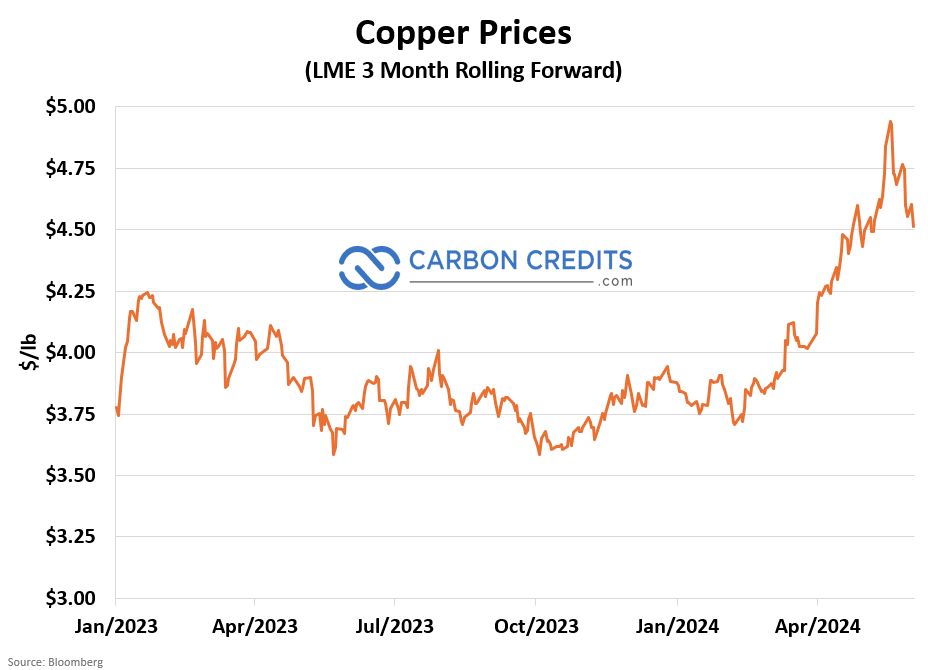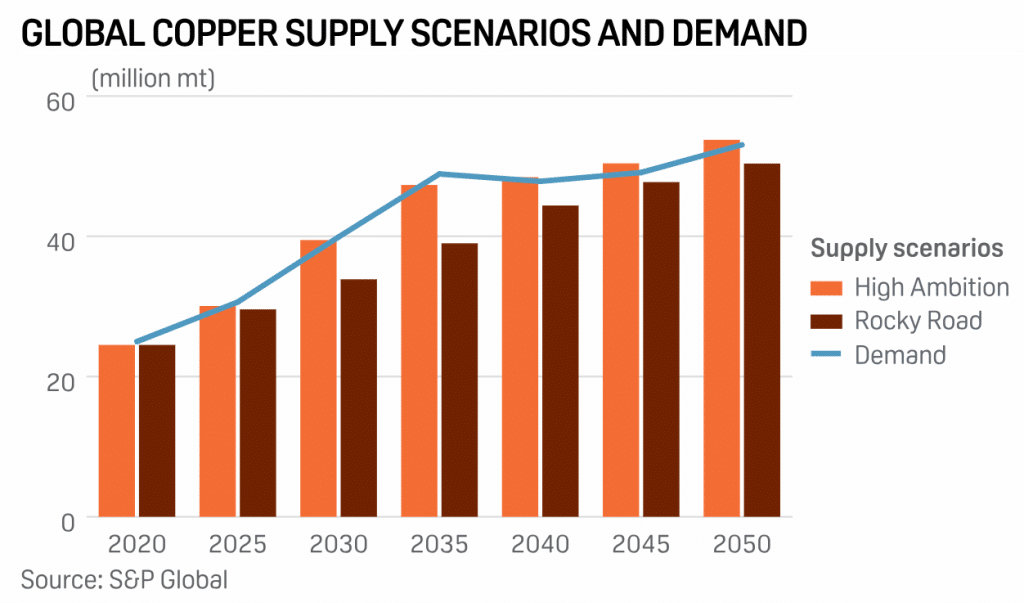Copper’s recent price surge reflects a complex interplay of market forces, from supply disruptions to the push for renewable energy. We explore the factors pushing copper prices to near-record highs and the implications for investors amid the evolving economic landscape.
In recent times, the copper market has witnessed significant shifts, largely influenced by key events. The Cobre Panama mine closure, a major global copper producer, impacted expectations from surplus to deficit. This resulted in an upward trajectory of copper prices.
In March, Chinese smelters decreased output amid a concentrate shortage, which pushed prices even higher.
Additionally, declining inventories of copper in major stockpiles, such as the Shanghai Futures Exchange (ShFE) and London Metal Exchange (LME), have contributed to upward pressure on copper prices. This trend stimulates demand for scrap copper as an alternative secondary source.
These factors, alongside speculative buying and supply constraints, have propelled copper prices to near-record highs, instilling investor confidence in the sector’s future.
Currently, copper prices remain above $4 per pound, reaching near a 15-month high last month. This indicates investor confidence in the copper market’s prospects.
China’s dominance in copper consumption further amplifies its role in shaping global demand dynamics and influencing copper prices. In 2022, China consumed about 55% of the world’s refined copper, highlighting its significant impact on copper market trends.
Copper’s Role in the Energy Transition
Beyond its pricing dynamics, copper’s significance extends to its role as a vital indicator of global economic health and catalyst of decarbonization efforts.
Copper’s crucial role in the transition to net zero emissions is increasingly recognized, particularly in renewable energy technologies and electric vehicles. However, projections indicate a potential supply-demand gap, calling for substantial investments in production and recycling to meet growing demand and achieve sustainability goals.
Key industries driving copper consumption include equipment manufacturing, construction, infrastructure, and emerging sectors such as EVs and green technologies. With the growing adoption of EVs, solar panels, and other clean energy technologies, copper demand is projected to increase substantially in the coming years. It could double by 2035.
In light of ambitious net zero targets set for 2035, industry estimates suggest that annual copper demand may need to escalate twofold to reach 50 million metric tons. Even more conservative projections anticipate a 1/3 surge in demand over the coming decade, propelled by significant investments in decarbonization initiatives from both public and private entities.
Challenges and Opportunities Ahead
Meeting the escalating demand for copper poses challenges, including declining ore grades and environmental concerns surrounding mining activities. Addressing these challenges requires significant investments, potentially driving copper prices to new highs. Analysts foresee continued price growth in the coming years, fueled by supply-demand imbalances and increasing demand from the green energy sector.
Uncertainties surrounding China’s economic recovery and the US Federal Reserve’s monetary policy decisions add complexity to future copper price trajectories. However, analysts remain optimistic about copper’s long-term prospects, driven by the energy transition and increasing demand from sectors such as electric vehicles and renewable power.
As nations vie for access to limited future copper supplies, securing domestic or friendly sourcing and refining capabilities emerges as a strategic imperative. Strategic investments in copper production and recycling are deemed crucial to meet growing demand and achieve net zero emissions goals amidst the expanding renewable energy infrastructure and electric vehicle adoption.
In conclusion, copper’s price trends, supply chain dynamics, and demand drivers underscore its significance as an essential commodity in various industries. Understanding these intricate market dynamics is crucial for informed decision-making and navigating the complexities of the copper market.




